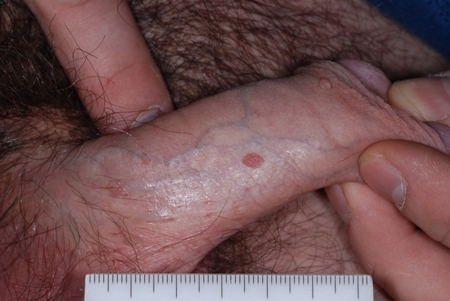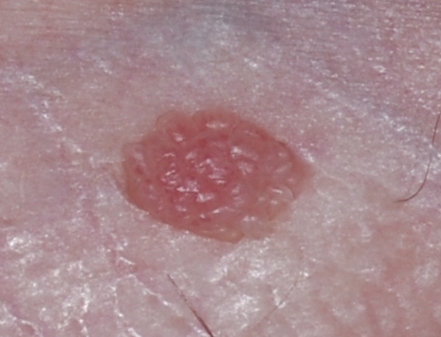Resumo
Definição
História e exame físico
Principais fatores diagnósticos
- aumento do risco de exposição ao HPV
- imunocomprometimento
- papilomas exofíticos e sésseis
Outros fatores diagnósticos
- assintomático
- prurido
- sangramento
- dor
- sintomas urinários
Fatores de risco
- relação sexual em idade precoce
- número crescente de parceiros sexuais durante a vida
- adultos jovens sexualmente ativos
- número crescente de parceiros sexuais durante a vida do parceiro
- imunocomprometimento
Investigações diagnósticas
Primeiras investigações a serem solicitadas
- nenhum exame inicial
Investigações a serem consideradas
- biópsia
- anuscopia
- uretroscopia
Algoritmo de tratamento
pacientes não gestantes e imunocompetentes
imunocomprometido
gestante
Colaboradores
Autores
Natalia Mendoza, MD
Pariser Dermatology Specialist
Williamsburg
VA
Declarações
NM declares that she has no competing interests.
Stephen K. Tyring, MD, PhD, MBA
Clinical Professor
Departments of Dermatology, Microbiology and Molecular Genetics and Internal Medicine
University of Texas Health Science Center
Houston
TX
Declarações
SKT declares that he has no competing interests.
Agradecimentos
Dr Natalia Mendoza and Dr Stephen K. Tyring would like to gratefully acknowledge Dr Brenda L. Pellicane, a previous contributor to this topic.
Declarações
BLP declares that she has no competing interests.
Revisores
Angela Moore, MD
Clinical Assistant Professor
University of Texas Medical Branch at Galveston
Galveston
TX
Declarações
AM declares that she has no competing interests.
Steve Baguley, FRCP, MSc
Consultant Genitourinary Physician
Woolmanhill Hospital
Aberdeen
Scotland
UK
Declarações
SB declares that he has no competing interests.
Créditos aos pareceristas
Os tópicos do BMJ Best Practice são constantemente atualizados, seguindo os desenvolvimentos das evidências e das diretrizes. Os pareceristas aqui listados revisaram o conteúdo pelo menos uma vez durante a história do tópico.
Declarações
As afiliações e declarações dos pareceristas referem--se ao momento da revisão.
Referências
Principais artigos
Forcier M, Musacchio N. An overview of human papillomavirus infection for the dermatologist: disease, diagnosis, management, and prevention. Dermatol Ther. 2010 Sep-Oct;23(5):458-76. Resumo
Ahmed AM, Madkan V, Tyring SK. Human papillomaviruses and genital disease. Dermatol Clin. 2006 Apr;24(2):157-65. Resumo
Meites E, Szilagyi PG, Chesson HW, et al. Human papillomavirus vaccination for adults: updated recommendations of the Advisory Committee on Immunization Practices. MMWR Morb Mortal Wkly Rep. 2019 Aug 16;68(32):698-702.Texto completo Resumo
Beutner KR, Wiley DJ, Douglas JM, et al. Genital warts and their treatment. Clin Infect Dis. 1999 Jan;28 Suppl 1:S37-56. Resumo
Workowski KA, Bachmann LH, Chan PA, et al. Sexually transmitted infections treatment guidelines, 2021. MMWR Recomm Rep. 2021 Jul 23;70(4):1-187.Texto completo Resumo
Artigos de referência
Uma lista completa das fontes referenciadas neste tópico está disponível para os usuários com acesso total ao BMJ Best Practice.

Diagnósticos diferenciais
- Condiloma lata
- Molusco contagioso
- Pápulas peroladas penianas
Mais Diagnósticos diferenciaisDiretrizes
- Recommended adult immunization schedule for adults ages 19 years or older: United States, 2023
- Reducing sexually transmitted infections
Mais DiretrizesFolhetos informativos para os pacientes
Verrugas genitais
Vacina contra o HPV (papilomavírus humano)
Mais Folhetos informativos para os pacientesConectar-se ou assinar para acessar todo o BMJ Best Practice
O uso deste conteúdo está sujeito ao nosso aviso legal
